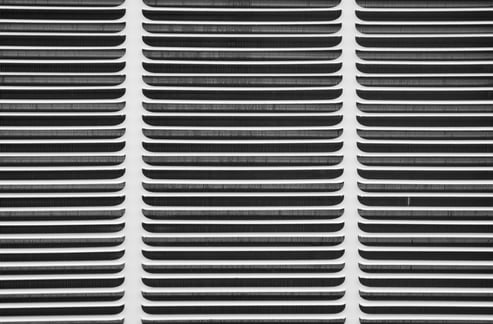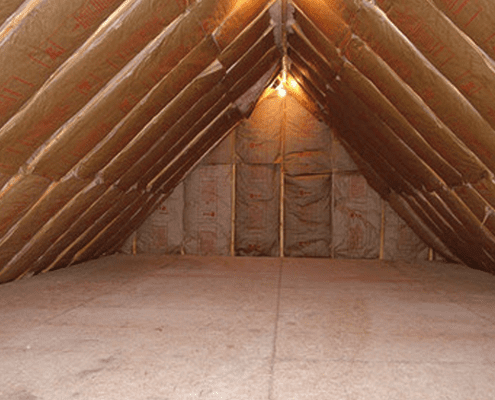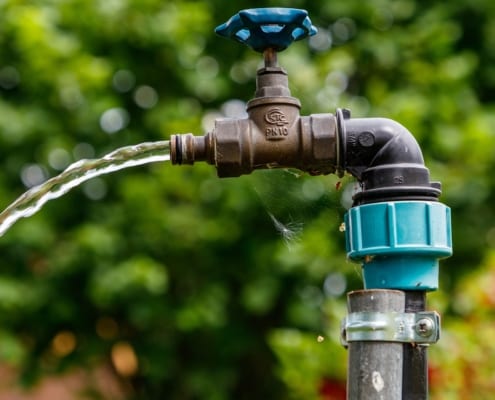Summer Home Maintenance Tips

Contents
Homes can slowly turn into money pits if you fail to maintain and upkeep the structure regularly. For homeowners, maintaining the home year-round will prevent costly repairs from happening in the future, and also make the house more attractive for prospective home buyers. In the warm summer months, failing to upkeep the house can lead to all sorts of expensive damage. As they often say, an ounce of prevention is worth a pound of cure.
If you own a home, you’ll need to keep these home maintenance tips in mind for the summer season. First, we’ll start with the interior of the house.
1. SAFETY FIRST: CHECK THE SMOKE ALARMS AND CARBON MONOXIDE DETECTORS

The smoke alarms and carbon monoxide detectors are vital to your safety, but we hardly ever think about them. The first thing you should do on your summer home maintenance agenda is to check to make sure they are working correctly. Replace the batteries if needed, and run a test just to be safe.
2. SCHEDULE SERVICE FOR YOUR HVAC

Talk to any specialist in the HVAC industry, and they will tell you that it never fails, an HVAC system will fall apart on the hottest day of the year. So will every one of your neighbors HVAC units. To avoid being stuck in a holding pattern, waiting your turn sweltering in the heat, have your HVAC system checked now before the temps get too harsh. Not only will you have a good working HVAC system, but the provider will be happy that you scheduled your maintenance early.
3. CHECK THE ATTIC AND THE BASEMENT

Spring and early summer are the perfect time to do a little home inspection of the basement and the attic. Check the basement for signs of mold, leaks, and mildew. If your basement walls appear damp or mold-infested, you can clean them with white vinegar or a bleach mixture, then apply a mold-killing spray to the area. Consider running a dehumidifier in the basement to eliminate moisture and prevent mold from regrowing.
In the attic, look for signs of pests or leaks in the roof. The health of the roof will have a direct impact on the structural integrity of your house. Any signs of pests or holes in the roof need to be dealt with immediately. Contact a reputable pest control company or a roofing contractor to take care of these issues before they turn into big problems.
4. DO A THOROUGH CLEANING OF THE HOME’S INTERNAL SYSTEMS

Clean the air vents, since dust and other allergens can accumulate over the winter and irritate everyone’s sinuses. Run a damp cloth over the baseboards of the house, and clean and dust the bathroom vents. Replace the showerheads if needed, and clean the bathroom and kitchen sink drains.
If you have a chimney, now is the perfect time to clean it out. Over the winter, the outside of the chimney can form tiny cracks, holes, and crevices for water ingress. Get the chimney flashing fixed to prevent costly leaks and mold growth from forming now that summer is on its way. The chimney liner may need to be replaced as well. It’s easier and cheaper to get a chimney looked at and serviced in the spring and summer months as opposed to fall and winter.
For the outside of the house, keep these tips in mind to get the exterior of the home clean and summer ready.
5. WASH THE WINDOWS AND SCREENS

Clear, sparkly windows can brighten up the home’s exterior and the interior as well. A clean facade will also inspire confidence in potential buyers if you’re planning to put your house up for sale this year.
Did you know you can use a vacuum to get up any debris that you might find in the window tracks? This little tip will save you a season of fighting a window open, or worse, struggling to get it closed again. You might even consider taking the screen out entirely and giving them a good wash down. You can use a biodegradable solution by mixing hot water with vinegar and apply in wide sweeping sprays. Let the solution go to work and then opt to take a brush or sponge to it and wash them.
You’ll want to dry each one with a dry towel or similar and then replace them. A little tip, sometimes, even when you’re working with windows that are all the same size, some mould to their window frames. You might mark them in that situation as to where they go, so you don’t fight with them later.
6. SPRUCE UP THE DECK AND THE PORCH

First, you’ll need to clear the area of furniture, then sweep off the porch and deck. Once the deck and the porch are clear of furniture and debris, you can thoroughly inspect them for signs of impending maintenance issues. Look for rotting boards that may need replacing, and hammer down any nails that have come loose and are sticking up. It’s also a good idea to check and see if your deck or porch needs resealed.
Spray down the area with a garden hose, or pour a bucket of water on the area. If the water beads into small puddles, then the deck does not need to be resealed, so you can breathe a sigh of relief. But if the water soaks into the wood, you’ve got a problem, and you’ll need to get the deck resealed pronto. Otherwise, those boards are going to rot and cause major headaches in the near future.
Once you’ve taken care of the structural integrity of the porch and the deck, it’s time to wash it with a high-quality cleaner and scrub away any stuck on dirt and grime.
While you're outside, take a look at your fence. If you have a metal fence, chances are you won’t have much to worry about, however, wood fences are a different story. Check them for damage and make a plan to repair, restain, repaint or rebuild any part of the fence that isn’t functioning correctly.
7. INSPECT THE OUTSIDE FAUCETS AND HOSES FOR LEAKS

Hoses with pinhole leaks can be temporarily repaired with black electrician’s tape. Wrap the tape around the hose when it is dry to stop the leak and get another summer’s worth of life out of the hose. Any leaking faucets will need tightened up or replaced, depending on the extent of the issue.
Mineral build-up can cause all kinds of annoying issues and most of which are pretty easy to handle. Faucets tend to stop working efficiently, and shower heads might start squirting you in the eye as one (or more) of the chambers decides to go rogue. Take your fixture apart and clean them with safe cleaners that will remove hard water, calcium, rust or lime. If you don’t want to take your show head apart (no one does), you can fill a plastic bag with your cleaning solution and tie that around the showerhead to soak.
As far as drains are concerned, this is not a fun job, but a good maintenance habit worth adopting. Don’t wait for there to be a backup, because you already know that is going to happen when you have guests. Be proactive and clean the drains and flush them with a bleach solution to get them flowing in tip-top shape.
8. CLEAN THE GUTTERS AND DOWNSPOUTS

After a Winter full of – who knows what, your drains and gutters might have taken a beating. Take some time to clean these spaces out because as Spring downpours arrive, the last thing you need is full gutters that backup water into your eaves doing some significant damage. If you’re uncomfortable doing this yourself, which is understandable, consider hiring someone to help you with this task. If hiring someone means you won’t have to climb ladders, the expense is worth it to get professionals.
The gutters and downspouts keep water from pooling on the roof or near the foundation. It’s critical that these parts of the house are clear of debris and in good working order. Replace any sections of the gutters or downspouts that are damaged, and clean the gutters of leaves, twigs, and other debris. This should ideally be done in the late spring, and again in late fall.
Summer only comes once a year, and the spring months leading up to the blazing hot summer are the perfect time to get your house in tiptop shape. Take the time to inspect and maintain your home this summer so you can sell it quicker and command a higher price for your well-maintained property.